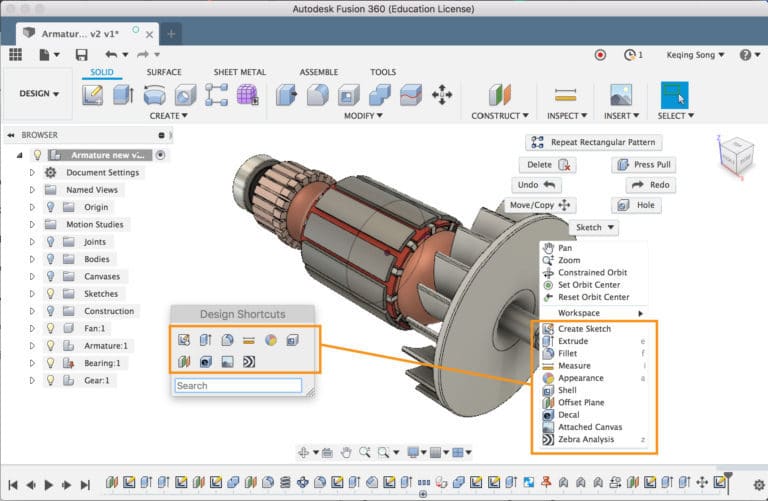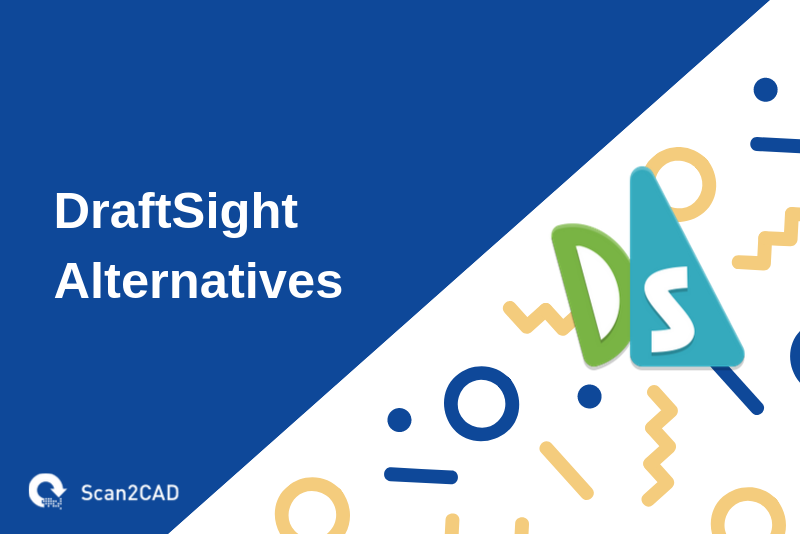When it comes to 2D drafting and 3D modeling, DraftSight is one of the most popular and widely used software packages. With DraftSight, you can create, edit, view, and markup various kinds of 2D and 3D files. One of the primary reasons behind this software package’s popularity is that it was free. However, following a significant upgrade of the software, Dassault systems, its developers, now only offer a paid version of DraftSight, beginning with the 2019 version. In addition, all free versions of the software will seize to operate from the 1st of January, 2020.
Following this development, many DraftSight users are now on the lookout for affordable alternatives. Also, some designers need the functionality of DraftSight but cannot afford the price. As a result of these factors, there has been an increase in the demand for affordable alternatives to DraftSight.
In this guide, we’ve compiled a list of the top five DraftSight alternatives available. We will be exploring and comparing their prices, uses, and functionality. We will then provide a final verdict.
Table of Contents
Before we start
There are various free CAD software available. However, we will be looking specifically at paid, affordable alternatives that do not sacrifice much of the functionality of DraftSight. Note that most CAD software packages have different products for different levels of users. DraftSight, for example, has three products with varying degrees of functionality, with DraftSight Premium being the most functional at $499/yr. This guide will be considering only the most functional product of each CAD software package.
DraftSight has a portfolio of advanced 2D and 3D features, including 3D printing, prototyping, and manufacturing tools that cater to the design needs of engineers and professional CAD users. Also, it runs on Windows, Fedora, Ubuntu, and Mac operating systems. However, since cost is as important a consideration as capability, you may wish to consider some of the affordable listed below.
SketchUp Pro

SketchUp Pro interface (source)
- Operating system: Windows, Mac
- Price: $229/yr
- Interested? Try out the free trial.
Formerly called Google SketchUp, SketchUp is a 3D design and modeling software by Trimble. SketchUp Pro is the most functional SketchUp product, others being SketchUp Free and SketchUp Shop.
Head-to-Head
SketchUp Pro is excellent for most things modeling as well as 2D documentation. When it comes to 2D drawing, DraftSight has more robust features. When it comes to 3D modeling, the software holds its ground for both simple shapes and complex solids. With SketchUp Pro, however, you can create both mechanical and architectural designs. Also, SketchUp Pro is compatible with various file formats, including DXF, FBX, DBJ, XSI, VRML, and DWG. This software also offers access to a vast model library known as the 3D warehouse and a plugin library known as the extension warehouse.
The limitation of SketchUp Pro is its inability to handle highly complex modeling such as the usage of NURBS (Non Uniform Rational Basic Spline surfaces).
Verdict
When it comes to 2D drafting and design, DraftSight floors SketchUp Pro. However, while DraftSight has full 3D modeling capabilities, access to a model library that comes with SketchUp Pro makes it easier to use. Again, DraftSight focuses on mechanical modeling, prototyping, and manufacturing. SketchUp Pro, on the other hand, has tools for the architectural and construction industry, alongside its mechanical features. These features are, however, relatively lightweight.
DesignCAD 3D Max

DesignCAD 3D Max interface (source)
- Operating system: Windows
- Price: $129.99/yr
- Interested? Try out the free trial
The developers of TurboCAD created DesignCAD 3D Max for users who require basic CAD functions but are unable to afford TurboCAD.
Head-to-head
DesignCAD 3D Max is a genetic CAD software for creating high-quality 2D and 3D designs. Similar to DraftSight, this software application has excellent and intuitive 2D drafting and design tools for drawing, editing, geometric construction, measuring, and dimensioning. Its 3D capabilities surpass DraftSight’s with regards to visualization, as DesignCAD 3D Max allows you to render, visualize, and animate your models. DesignCAD 3D Max also includes basic modeling features for industries such as architecture, construction, topography, mechanical, and electrical. However, this is where the software’s superiority ends. The software has only the basic versions of the advanced DFM (Design For Manufacturing) features of DraftSight.
Verdict
Again, DraftSight surpasses DesignCAD 3D Max in 2D drafting and design. It also has better DFM tools. However, for modeling requirements for industries other than manufacturing, DesignCAD is an efficient, low-cost DraftSight alternative.
NanoCAD

NanoCAD interface (source)
- Operating system: Windows
- Price: $290/yr
- Interested? Try out the free trial
NanoCAD was created in 2008 by Nanosoft, a Russian based CAD company, as a low-cost alternative to AutoCAD. This software package has different products, but we will be considering only its premium product, NanoCAD Pro. This product gained popularity for its impressive drawing features.
Head-to-head
Widely considered as an alternative to the original AutoCAD, NanoCAD Pro is a worthy DraftSight alternative. It has full DWG CAD features with robust design and drafting tools, as well as an open API. Similar to DraftSight, NanoCAD has the familiar ribbon-styled interface of many CAD software available today. Its 2D drafting features include tool palettes, dynamic data input, document sets, and direct DWG format support. When it comes to 3D modeling, NanoCAD Pro offers parametric 3D modeling alongside the use of 2D constraints. However, DraftSight towers over this software, with its DFM features.
Verdict
In the area of 2D drafting and design, NanoCAD Pro is indeed a worthy and affordable DraftSight alternative. For 3D modeling, DraftSight proves its superiority with far more functionality. While NanoCAD Pro can handle 3D solid modeling with its Autodesk Inventor-style tools, DraftSight goes ahead to cater for various manufacturing processes.
Fusion 360

Fusion 360 interface (source)
- Operating system: Windows and Mac
- Price: $495/yr
- Interested? Try out the free trial
The name, Autodesk, is associated with functionality and capability. Fusion 360 by Autodesk is a powerful 3D CAD, CAM, and CAE software. Its vast array of tools unify design, engineering, and manufacturing into a single package. One of the things that make it stand out is that it is delivered using a SAAS model. This means that it’s cloud-based and requires no downloads.
Head-to-head
Fusion 360, being a DFM software, has few 2D drafting and design features. When it comes to 3D modeling, however, it is one of the most complete and functional software packages available today. Its features are classified into the following. 3D modeling, for creating highly complex models using both geometric and parametric-based methods; Simulation, for analyzing the workings and usability of your design; and Documentation, for deriving 2D drawings from 3D models. Other features include rapid prototyping, generative design, and manufacturing.
Verdict
For 2D drafting and documentation, DraftSight remains the preferred choice. On the other hand, for all things mechanical design, modeling, and manufacturing, Fusion 360 is a far more advanced and functional DraftSight alternative. Note that the price difference between them is just $5, so selecting between the two depends more on your intended usage than cost.
AC3D

AC3D interface (source)
- Operating system: Windows and Mac
- Price: $495/yr
- Interested? Try out the free trial
Developed by Inivis, AC3D is a generic and easy to use 3D modeling software that caters to various modeling needs including 3D modeling, rapid prototyping, 3D printing, flight simulation, games, Google Earth, virtual reality, general data visualization, and much more.
Head-to-head
AC3D does not have 2D features as its main focus is solid modeling. Despite its lineup of features, it has a smooth learning curve. One of the major selling points of the software is its support for an extensive range of 3D file formats. This makes it useful in various industries.
Verdict
AC3D can be used by designers, engineers, topographers, manufactures, and many more. DraftSight, on the other hand, has its 3D features geared towards manufacturing only. However, since AC3D has no 2D features, it cannot be compared in this aspect to DraftSight.



